 Using equipment certified as intrinsically safe by an independent testing agency such as FM Global, reduces the risk of death or injury and the potentially catastrophic loss of buildings and machinery that often result from an explosion. It may also yield direct savings in terms of lower insurance premiums. Specific aspects of intrinsically safe instrumentation addressed in this article are:
Using equipment certified as intrinsically safe by an independent testing agency such as FM Global, reduces the risk of death or injury and the potentially catastrophic loss of buildings and machinery that often result from an explosion. It may also yield direct savings in terms of lower insurance premiums. Specific aspects of intrinsically safe instrumentation addressed in this article are:
- Summary of what constitutes a hazardous area
- Explanation of “intrinsic safety”
- Importance of independent testing and certification
- Use of pressure and load-sensing instrumentation in hazardous locations
Identifying Hazardous Areas
OSHA and National Electrical Code (NEC) standards address the use of electrical equipment in hazardous locations and offer guidance for risk mitigation. Relevant OSHA standards include 1910.307 and 1910.399 and NEC standards include NEC 500, which is in the process of being superseded by the globally harmonized standard NEC 505.
These address what OSHA terms, “electric equipment and wiring in locations that are classified depending on the properties of the flammable vapors, liquids or gases, or combustible dusts or fibers that may be present therein and the likelihood that a flammable or combustible concentration or quantity is present.” It should be noted that even materials typically considered "not able to ignite", such as metals, can burn with explosive rapidity when conditions are right. Examples of such environments include petroleum and chemical processing plants, paint-finishing process plants, sugar refineries and indeed any place where an explosive atmosphere or dust may build-up.
NEC 500 and 505
The underlying approach is to classify hazardous locations in terms of the type of combustible material and the likelihood of it being present. The outgoing NEC 500 standard, used in the USA and Canada, separates the materials into two classes. Class 1 relates to vapors and gases while Class 2 refers to dust. The likelihood of the material being present is covered by several “Divisions”. Under Division 1 an explosive atmosphere is continually present or likely under normal conditions.
Division 2 covers locations that, according to OSHA, “would become hazardous only in case of an accident or of some unusual operating condition.”
Under the newer NEC 505 standard these Classes and Divisions are replaced with Zones. Zones 0, 1 and 2 relate to gases or vapors while Zones 20, 21 and 22 address dust. In both, the second digit indicates the level of risk with 0 signifying a continuous hazard and 2 meaning it is rarely, if ever, present.
Understanding Intrinsic Safety
Many techniques exist for ensuring the safety of electrical equipment in hazardous locations. Of these, the safest alternative is to use “intrinsically safe” devices and instrumentation. This is a preventive approach based around minimizing ignition sources such as sparks and hot surfaces.
Some equipment such as motors are not readily suited to the intrinsic safety approach and must be enclosed. However, low voltage instruments can be designed to be intrinsically safe. For a complex piece of equipment or interconnected devices to qualify as intrinsically safe every link in the chain must be integrally safe. Designers of process control and instrumentation equipment need to bear this in mind.
A second advantage of using devices or equipment certified as intrinsically safe is that it permits live maintenance to be performed. This avoids the need for extended shutdowns, venting and gas clearance. Additionally, fault finding is greatly simplified as circuit tests can be performed while the equipment is energized.
Periodically, equipment will need repair or replacement, or new instrumentation is to be retrofitted in a hazardous location. When this happens it is essential that maintenance technicians use components certified as intrinsically safe.
There are however exceptions. Instrumentation designated as a “simple apparatus” need not explicitly conform to intrinsic safety design principles. To be classed as “simple apparatus” the safety of the instrument should be readily demonstrable. Examples are thermocouples, RTDs and junction boxes.
Independent Testing and Certification
Users of safety-related equipment like to have independent confirmation of conformance to the relevant standards, and insurers may require it. A number of organizations undertake such testing and certification. OMEGA works with FM Global, a National Recognized Testing Laboratory (NRTL), to ensure equipment like pressure transducers intended for use in hazardous environments are safe for such applications.
As the name implies, FM Global has offices around the world and is internationally recognized. They operate several research centers where they undertake product testing and provide product certification services.
Instrumentation sold by OMEGA that meets intrinsic safety standards displays the “FM Approved” mark. Equipment without such marking must not be used in hazardous environments unless other appropriate precautions are taken.
Pressure and Load-Sensing in Hazardous Locations
The list of locations requiring intrinsically safe devices is extensive. Most process control applications in industries as diverse as chemical refineries, power generation, oil and gas production and anywhere with airborne dust, such as silos, should utilize such instrumentation.
A very diverse range of equipment can be found in, or may need to be used in hazardous locations. This includes hydraulic and pneumatic systems, natural gas compressors and shock and vibration measurement and testing hardware. Pressure measurement is one very common task required, whether for absolute pressure, vacuum, or barometric pressure. Filters and pumps like those used in oil and gas production operations need monitoring so that any blockage or failure can be identified quickly. Likewise, flow measurement is an essential part of process control in many industries.
Less obviously, dusty environments such as sawmills, grain silos and sugar refineries often qualify as hazardous locations. These are environments where load cells are used extensively for checking container weights, so as with pressure-sensing, intrinsically safe instrumentation should be employed.
OMEGA carries a wide range of intrinsically safe pressure sensors, configurable pressure transducers and load cells, including amplified load cells, low-profile load cells and pancake load cells. If the intended application is in a hazardous location, check the individual specifications for FM approval.
Summary
In many industries a very real risk of explosion exists, whether from dust or flammable gases and vapors. NEC standard 500, currently being superseded by the globally-harmonized standard NEC 505, address the design of electrical equipment for such environments.
Several protection techniques have been developed to handle the use of electrical and electronic equipment in such environments. However, only intrinsic safety seeks to prevent explosions by avoiding sparks and hot surfaces through minimization of the energy used.
When an intrinsic safety approach is taken, the equipment and instrumentation deployed in hazardous locations must be designed appropriately, and verified as such by an independent testing authority. OMEGA works with FM Global for all our intrinsic safety certification needs: ensure that the electrical equipment you intend on installing carries an FM approval.
 CLOSE
CLOSE




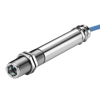
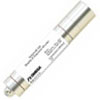
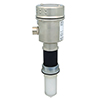
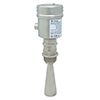
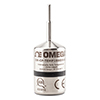
 High-value assets such as aerospace systems must be monitored and protected while in transit to the final assembly location...
High-value assets such as aerospace systems must be monitored and protected while in transit to the final assembly location...
 Recording temperature in freezers is important in the storage of blood plasma, vaccines, pharmaceuticals...
Recording temperature in freezers is important in the storage of blood plasma, vaccines, pharmaceuticals...
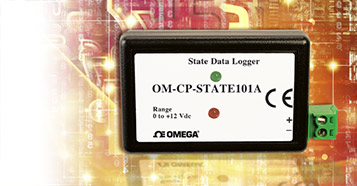 Understanding the principles of how they operate is vitally important when selecting a data logger for your application.
Understanding the principles of how they operate is vitally important when selecting a data logger for your application.